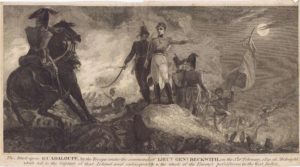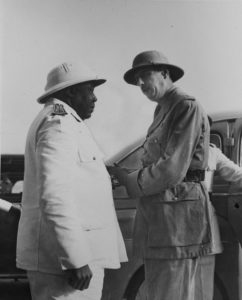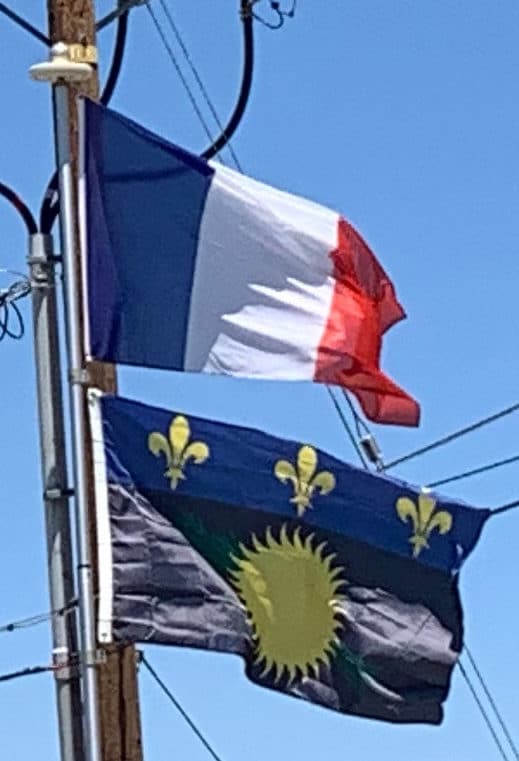The 1789 French Revolution brought chaos to Guadeloupe. Under new revolutionary law free people of color were entitled to equal rights. Taking advantage of the anarchic political situation, Britain invaded Guadeloupe in 1794, to which the French responded by sending in soldiers led by Victor Hugues, who retook the lands and abolished slavery. In the Reign of Terror that followed more than 1,000 colonists were killed.
In 1802 the First French Empire reinstated the pre-revolutionary government and slavery, prompting a slave rebellion led by Louis Delgrès. The French authorities responded quickly, culminating in the Battle of Matouba on 28 May 1802. Realizing they had no chance of success, Delgrès and his followers committed mass suicide by deliberately exploding their gunpowder stores. In 1810 the British again seized the island, handing it over to Sweden in 1813.

In the Treaty of Paris of 1814, Sweden ceded Guadeloupe to France, giving rise to the Guadeloupe Fund. In 1815 the Treaty of Vienna definitively acknowledged French control of Guadeloupe.
Slavery was abolished in the French Empire in 1848. From 1854 indentured servants from the French colony of Pondicherry in India were brought in. Emancipated slaves had the vote from 1849, but French nationality and the vote was not granted to Indian citizens until 1923, thanks largely to the efforts of Henry Sidambarom.
20th-21st Centuries:
In 1936 Félix Éboué became the first black governor of Guadeloupe. During the Second World War Guadeloupe initially came under the control of the Vichy government, later joining Free France in 1943. In 1946, the colony of Guadeloupe became an overseas department of France.

Tensions arose in the post-war era over the social structure of Guadeloupe and its relationship with mainland France. The ‘Massacre of St Valentine’ occurred in 1952, when striking factory workers in Le Moule were shot at by the Compagnies républicaines de sécurité, resulting in four deaths. In May 1967 racial tensions exploded into rioting following a racist attack on a black Guadeloupean, resulting in eight deaths.
An independence movement grew in the 1970s, prompting France to declare Guadeloupe a French region in 1974. The Union populaire pour la libération de la Guadeloupe (UPLG) campaigned for complete independence, and by the 1980s the situation had turned violent with the actions of groups such as Groupe de libération armée (GLA) and Alliance révolutionnaire caraïbe (ARC).
Greater autonomy was granted to Guadeloupe in 2000. Through a referendum in 2003, Saint-Martin and Saint Barthélemy voted to separate from the administrative jurisdiction of Guadeloupe, this being fully enacted by 2007.
In January 2009, labor unions and others known as the Liyannaj Kont Pwofitasyon went on strike for more pay. Strikers were angry with low wages, the high cost of living, high levels of poverty relative to mainland France and levels of unemployment that are amongst the worst in the European Union. The situation quickly escalated, exacerbated by what was seen as an ineffectual response by the French government, turning violent and prompting the deployment of extra police after a union leader (Jacques Bino) was shot and killed. The strike lasted 44 days and had also inspired similar actions on nearby Martinique. President Nicolas Sarkozy later visited the island, promising reform. Tourism suffered greatly during this time and affected the 2010 tourist season as well.
Geography:
Guadeloupe is an archipelago of more than 12 islands, as well as islets and rocks situated where the northeastern Caribbean Sea meets the western Atlantic Ocean. It is located in the Leeward Islands in the northern part of the Lesser Antilles, a partly volcanic island arc. To the north lies Antigua and Barbuda and the British Oversea Territory of Montserrat, with Dominica lying to the south.
